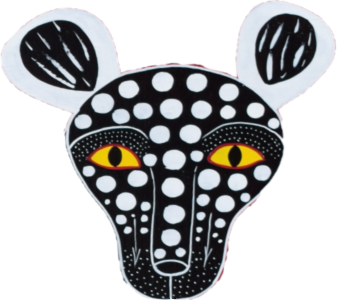In addition to the symbolic meanings attached to the portrayal of women in African paintings, there are also aesthetic considerations. African artists often use bright, bold colors and dynamic compositions to capture the energy and vitality of their subjects. The use of pattern and texture is also a common feature, with intricate designs often incorporated into clothing or accessories worn by the women.
One example of the use of bold colors and dynamic composition in the portrayal of women can be seen in the work of Nigerian artist Nike Davies-Okundaye. Her paintings often feature groups of women engaging in everyday activities, such as cooking or tending to their children. In these works, the women are depicted in vibrant hues of red, yellow, and orange, with their flowing garments and dynamic poses adding to the sense of movement and energy.
The use of pattern and texture is also a common feature in Davies-Okundaye's work, as well as in the work of other African artists. In many African cultures, textiles play an important role in both everyday life and ceremonial occasions. African fabrics are often made using intricate techniques such as batik or tie-dye, and are known for their bold, colorful designs. African artists often incorporate these textile designs into their paintings, using them to add depth and interest to the clothing and accessories worn by their female subjects.
One example of this can be seen in the work of Ghanaian artist El Anatsui. Anatsui's large-scale installations, made from discarded bottle caps and other found materials, often feature shimmering, tapestry-like surfaces that resemble traditional African textiles. These works are both beautiful and thought-provoking, highlighting the importance of recycling and reuse, while also celebrating the rich textile traditions of Africa.
The portrayal of women in African paintings is a complex and multifaceted subject, with a rich history and deep cultural significance. From the symbolic meanings attached to traditional dress and adornment, to the dynamic compositions and bold use of color, African artists have long been captivated by the beauty and resilience of women in their communities. Through their art, they have celebrated the strength and vitality of women, while also exploring the challenges and struggles they face in a changing world. Today, the portrayal of women in African art continues to evolve, reflecting the diverse experiences and perspectives of artists across the continent and around the world.
The portrayal of women in African paintings is a fascinating subject that reflects the diversity, strength, and resilience of African women. African women have been depicted in various roles, from mothers and wives to warriors and leaders, in a wide range of styles, mediums, and contexts. In traditional African societies, women have often held important roles as caretakers, nurturers, and spiritual leaders. They are also considered the guardians of tradition and culture, and their knowledge and wisdom are highly valued. Traditional African paintings often depict women in these roles, highlighting the importance of maternal love and care in African societies.
Contemporary African art has evolved to reflect changing societal attitudes and experiences, with many artists using their work to challenge traditional gender roles and stereotypes, and to explore the complexities of gender and identity in contemporary Africa. Through their art, these artists are creating a powerful and transformative dialogue about the role of women in African societies.
In addition to the symbolic meanings attached to the portrayal of women in African paintings, there are also aesthetic considerations. African artists often use bright, bold colors and dynamic compositions to capture the energy and vitality of their subjects. The use of pattern and texture is also a common feature, with intricate designs often incorporated into clothing or accessories worn by the women. The incorporation of African textiles and traditional techniques such as batik and tie-dye adds depth and interest to the paintings, celebrating the rich textile traditions of Africa.
Examples of contemporary African artists who explore issues of gender and identity in their work include Wangechi Mutu and Amoako Boafo. Mutu's mixed-media works challenge traditional beauty standards and subvert gender stereotypes, while Boafo's paintings celebrate the beauty, strength, and resilience of Black women.


